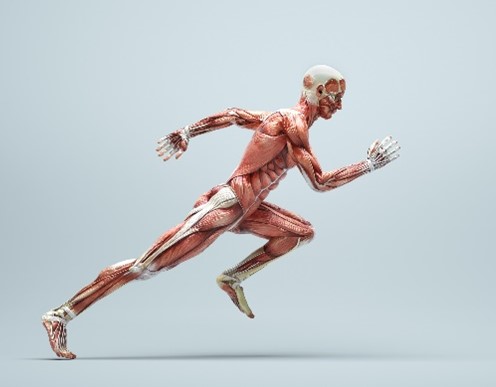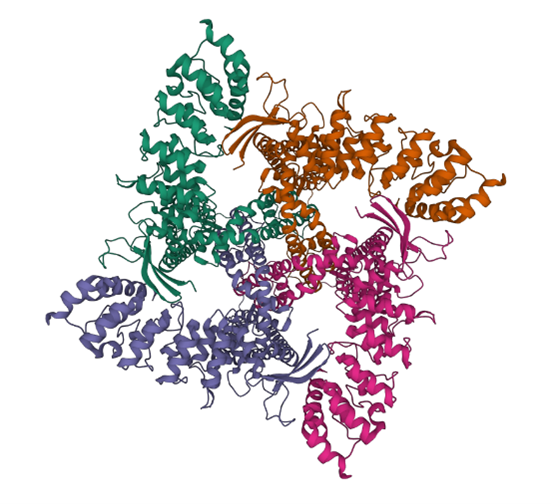Someone’s hand moving to scroll through this blog post is possible because of a mineral that both gives bones their strength and allows muscles to move: calcium. As the most abundant mineral in our bodies, it’s essential for lots of important functions. It’s found in many foods, medicines, and dietary supplements.
 Calcium keeps your bones strong, allows your muscles to move, and is important for many other bodily functions. The element is found in foods, medicines, and the world around us. Credit: Compound Interest CC BY-NC-ND 4.0. Click to enlarge.
Calcium keeps your bones strong, allows your muscles to move, and is important for many other bodily functions. The element is found in foods, medicines, and the world around us. Credit: Compound Interest CC BY-NC-ND 4.0. Click to enlarge.
Committed to Critical Duties

Most calcium in your body is stored in bones and teeth as a solid, inorganic calcium-phosphate matrix, providing them with their structure and hardness. The body is constantly remodeling bones, meaning it pulls calcium from them and then redeposits some back to form new bone. This bone remodeling is how bones change size during growth and repair damage when broken. It’s also an important process to help the body maintain appropriate blood levels of calcium and other minerals that the body stores in bone.
Channeling Your Inner Calcium
Other parts of your body like blood and tissue contain ionized, or electrically charged, calcium. It’s a tiny fraction of your total calcium, but it’s incredibly important for keeping your body functioning. Ionized calcium allows your muscles to move, nerves to carry messages between your brain and the rest of your body, and blood vessels to pump blood throughout your body. It can even stimulate the release of hormones.

Calcium can have such wide-reaching effects because it not only acts as a signaling molecule itself but, as an ion, it also generates membrane potentials—or the buildup of charge on one side of a cell membrane that creates electrical signals. Calcium ions cross cell membranes through calcium channel proteins, which serve as gatekeepers to regulate the calcium ion concentrations needed for the cell to function properly. Calcium channels in heart cells, for example, control the contractions of the heart muscle. During each contraction cycle, calcium channels open, calcium rushes into the cells, and the flood sets off a response that tells the muscle to contract. Calcium ions can also act as the key that opens other ion channels, such as potassium or chloride channels, regulating the flow of those ions and the functions they induce.
Get Your Calcium!

Calcium is naturally found in dairy products like milk, yogurt, and cheese. Other foods are fortified to include it—meaning the mineral is added to them to make it easier for us, the consumers, to get the amounts we need from our diets. Calcium is also found in some daily vitamins and dietary supplements. When it’s in the form of calcium carbonate, it’s a good acid-neutralizer and is used as an over-the-counter antacid medication.
For your body to absorb the calcium you consume, you also need vitamin D. Your skin makes vitamin D when it’s exposed to sunlight, but foods like fatty fish, egg yolks, and liver contain it as well. Often, foods that are fortified with calcium are also fortified to contain vitamin D to aid in the absorption of the calcium. Not getting enough calcium—or your body not absorbing enough of what you take in—can lead to health problems often involving weakened or fragile bones.
NIGMS-Supported Calcium Research
Several scientists receive support from NIGMS to conduct calcium-related research. Some of these researchers are:
- Exploring how calcium currents in the brain contribute to the effects of general anesthetics
- Investigating how sensor proteins regulate calcium ions during cell signaling
- Determining how channel proteins distinguish between calcium and other ions and regulate the amount of calcium they allow into the cell
- Using research organisms to understand how calcium levels change based on growth conditions
Check out our other posts on elements.








What is the best source of dietary calcium?
What and where to get calcium tablets?
Thanks for your comment. NIH’s Office of Dietary Supplements is a great resource to answer your questions. We’d recommend starting with their Calcium Fact Sheet.